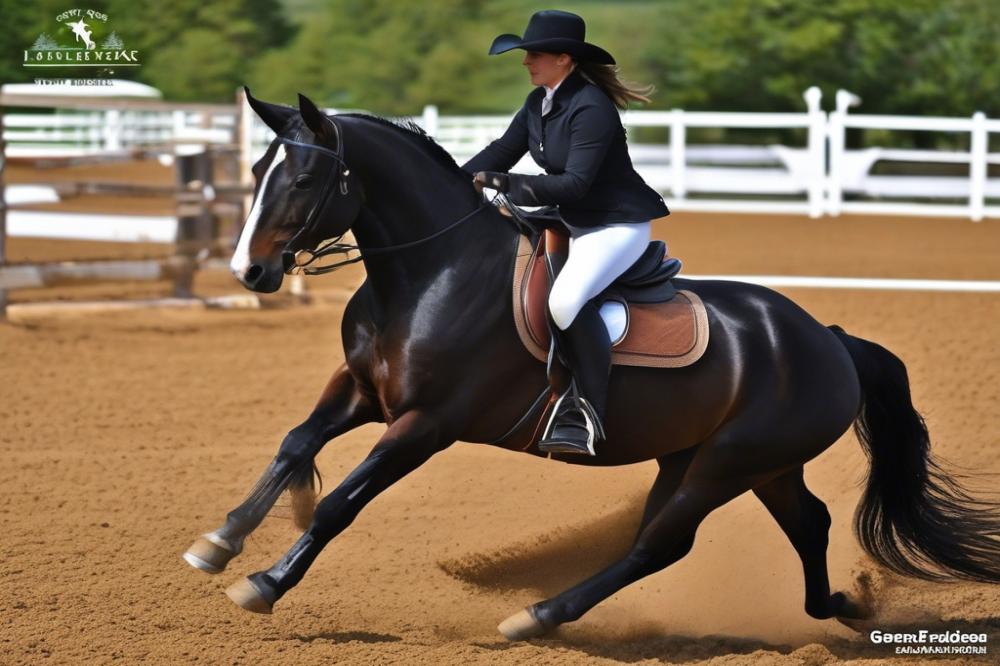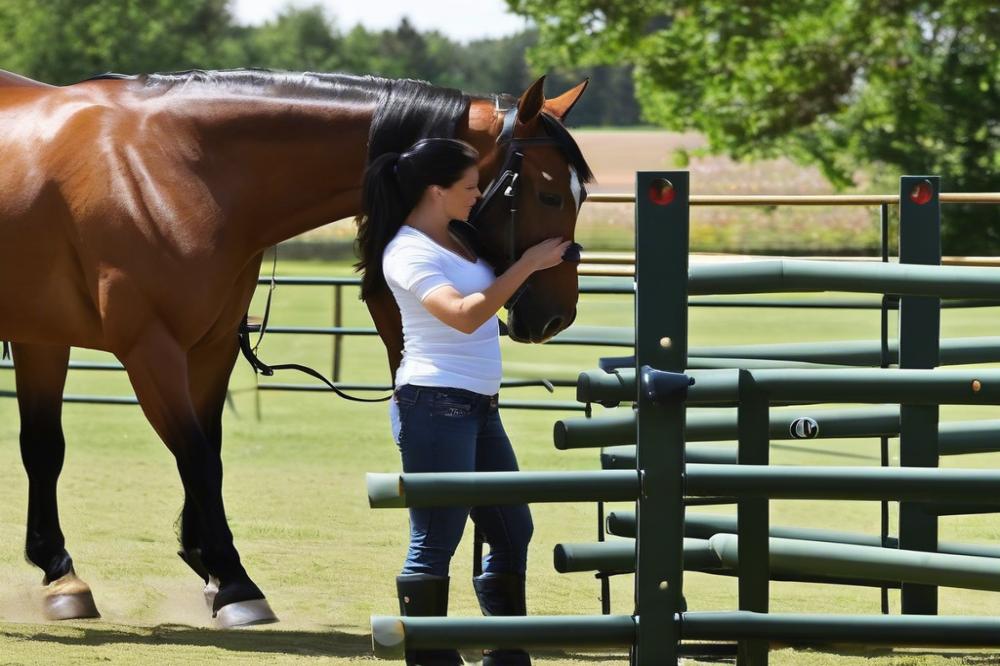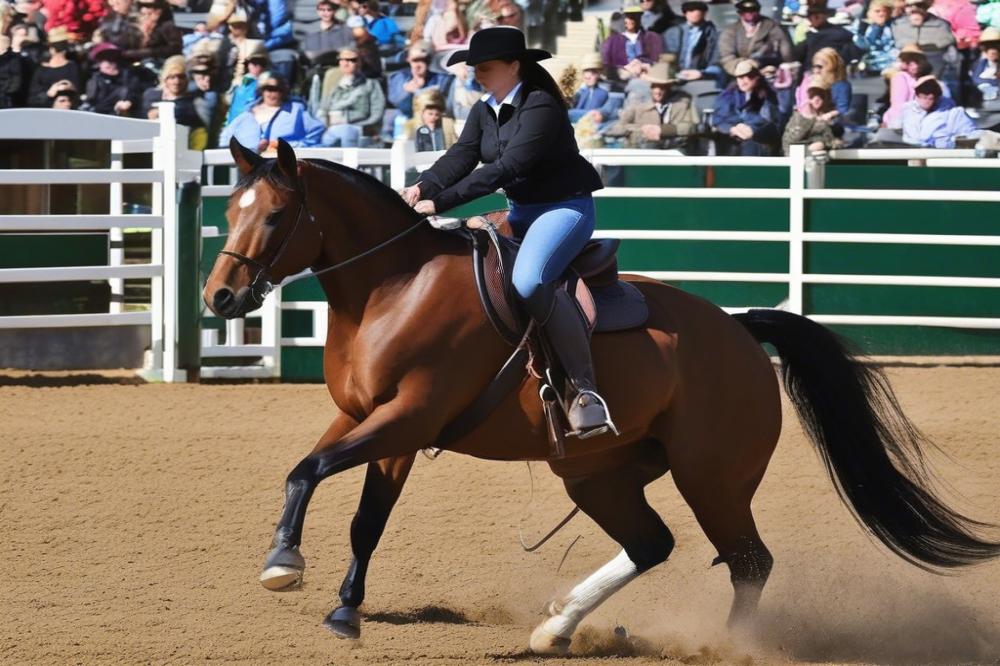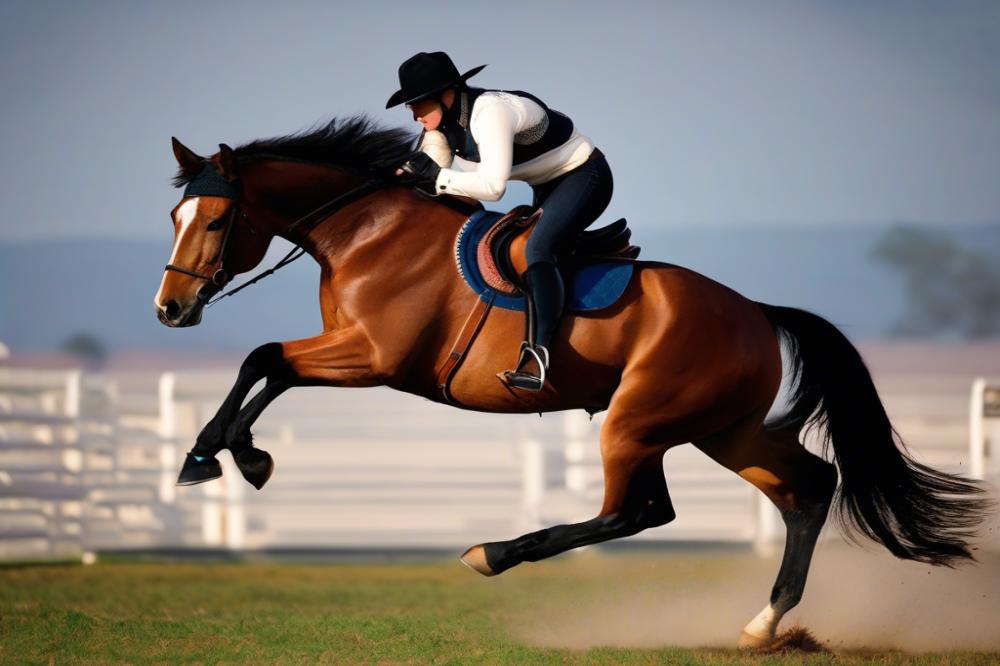Understanding Horse Behavior
When we think about our four-legged friends, it’s important to remember that each horse has a personality all its own. Some might be gentle giants, while others could be more spirited, like a dun horse ready to show off its energy. These proud creatures communicate with their bodies and actions, and it’s our job to decipher their signals and respond accordingly. Bucking can often be a horse’s way of saying, “Whoa, slow down! This isn’t comfortable for me!”
The Importance of Addressing Bucking

Taking the time to address the issue of bucking is crucial for both the safety of the rider and the well-being of the horse. Imagine being in a tight spot where something just doesn’t feel right! Wouldn’t you want someone to help you figure it out? When a horse bucks, it might signal discomfort, fear, or even pain. Ignoring this behavior can lead to dangerous situations for both the horse and their rider, much like a car that won’t stop squeaking—it needs attention before it leads to a bigger issue.
Solutions Ahead

In this article, we’re diving into effective bucking solutions that can help you maintain safety and harmony during your horse riding adventures. From horse training tips to proper horse care, these methods are designed to give you and your equestrian partner the best ride possible. By building trust and understanding, you can tackle bucking head-on and turn those erratic moments into smooth strides.
Let’s roll up our sleeves and figure out why that beautiful stallion or mare might be skipping along like it’s in a camel vs horse speed in desert race! Together, we’ll uncover practical strategies to help keep your horse relaxed and ready to enjoy all the great activities the world of riding has to offer.
Understanding the Causes of Bucking

When a horse bucks, it can be concerning for any rider. First things first, physical discomfort and pain can lead a horse to buck. Think about it this way: if you had a rock in your shoe, you’d likely jump around, right? Horses feel similar discomfort. Common issues like back pain, sore joints, or even an ill-fitting saddle can make a horse act out. Always check your horse for any signs of injury, and consult a vet if you suspect something is wrong.
Next, consider behavioral issues, which often go hand-in-hand with physical problems. Sometimes, a horse may buck simply out of frustration. Maybe it’s bored or scared of something unexpected. Horses are like people; they have moments of surprise, which can lead to unexpected jumps. Understanding equine behavior is crucial. A horse that has had a tough history may act out. Patience and gentle handling can go a long way in calming any nerves.
Lack of training or experience can also play a major role. A young horse might be unsure of what to do under saddle. If it’s faced with a new situation, its instinct might be to buck and run. Riders need to gradually teach their horses the ropes. Effective horse training is key here. Being consistent and using positive reinforcement can help a horse feel more secure when riding. The goal is to instill confidence. Even the best horses start somewhere.
Finally, consider environmental factors. Sometimes, the area around a horse can make it feel uneasy. Was there a loud noise? Maybe a strange animal caught its eye. Horses are naturally sensitive creatures. A sudden clap of thunder or a bustling crowd can cause them to react with bucking. When horse riding, ensure the environment is calm and controlled when introducing your horse to new places. Good horse care also involves preparing your horse for various situations. Always remember, you want your horse to be as relaxed as possible.
Assessing Your Horse
Understanding your horse starts with paying attention to signs of pain or discomfort. Horses can’t speak like humans, so it’s our job to notice if they are wincing or shifting their weight. Have you ever seen a horse flinch when you touch their side? This could mean something hurts. When pain is involved, no amount of horse training will stop the bucking.
An important part of horse care is observing behavior patterns. Does your horse tend to buck only in certain situations? Maybe it happens during rides, but not when being led. That’s a clue. Take note of how your horse acts before a buck. Does it seem anxious or restless? These behaviors are key to understanding their equine behavior.
A veterinarian check-up can be a lifesaver. Think of it as a tune-up for your horse. There could be underlying health issues causing the bucking. A vet can spot problems that you might miss. Remember, a happy horse is a safe horse. Who wants to ride a bucking bronco if they don’t have to?
Noting triggers for bucking is crucial for effective equestrian techniques. Is it the saddle that makes them uncomfortable? Perhaps a spooky object in the arena? Identifying what sets off the buck will help in finding the right bucking solutions. You might discover that your horse only bucks when they see a passing dog. Understanding these triggers can make all the difference.
Each horse is unique and requires thoughtful attention. The more you know about their habits, the better rider you will be. Remember to have patience and be curious. Communication with your horse is just as important as any riding lesson. So grab a notebook, jot down your observations, and let’s get to work on stopping your horse from bucking!
Training Techniques to Prevent Bucking
When it comes to stopping a horse from bucking, understanding equine behavior is key. Positive reinforcement can work wonders. Instead of just scolding your horse for misbehaving, try rewarding them for good behavior. A simple “Good boy!” accompanied by a treat can create a happier horse. This technique makes your animal associate riding with positive experiences.
Groundwork exercises are vital too. Start by leading your horse around the arena. Spend time getting them used to your presence on the ground before ever getting on their back. Working with your horse on the ground builds a strong bond. This can make your horse feel safe, which reduces chances of unexpected movements.
Desensitization to stimuli is another technique to consider. Horses can get spooked by sudden noises or movements. Introduce your horse to various sounds, sights, and objects gradually. This could be a plastic bag flapping in the wind or a loud horn. Let them explore these items at their own pace. This helps them stay calm when facing surprises while riding.
Building trust and confidence comes next. Spend quality time with your horse. Give them space to get to know you, and always be patient. Talk to them as you would to a friend. If they trust you, they will be less likely to buck. Remember, a confident horse is also a more relaxed one.
All these methods form a well-rounded approach to horse training. Combine positive reinforcement, groundwork, desensitization, and trust-building to create effective bucking solutions. Make your horse riding experience enjoyable for both of you!
Equipment and Gear Considerations
Proper Saddle Fit
A saddle that doesn’t fit well can turn a peaceful ride into a rodeo. Just like humans, horses have unique body shapes. If a saddle is too tight or too loose, it can cause discomfort. That discomfort might lead to behavior issues, including bucking. Always check your saddle’s fit. A well-fitting saddle allows freedom of movement and helps your horse feel comfortable during horse riding.
Choosing the Right Bit
Bits come in many styles, which can affect how your horse responds. Some bits are gentler, while others can be quite harsh. If your horse is unhappy with the bit, it may display unwanted equine behavior, like bucking. Pay attention to how your horse reacts to the bit. Finding the right one could make a world of difference in your training efforts.
Importance of Quality Tack
Cheap, poorly-made tack can be more trouble than it’s worth. Quality items last longer and provide better safety. Imagine riding with a bridle that breaks at the worst moment. Yikes, that’s a scary thought! Investing in good gear means you’re prioritizing your horse’s comfort and safety, a key part of horse care.
Regular Equipment Maintenance
Maintenance should never be an afterthought. Just like we service our cars, our riding gear needs attention too. Inspect tack for wear and tear. Look for frayed straps or rusted metal. A little care goes a long way in preventing issues. Making these checks part of your routine can help in finding bucking solutions before they become a problem.
Rider Techniques to Minimize Bucking
Correct Riding Posture
Good posture is like a sturdy bridge; it supports everything else. Sit up straight, shoulders back, and keep your heels down. This position helps you stay balanced. Remember, your horse feels your weight shift. If you lean too far forward or back, the horse might feel unbalanced and start to buck. Being centered helps both of you feel more secure.
Importance of Leg and Seat Aids
Using your legs correctly is crucial in horse riding. Think of them as your secret communication tool. Your legs should gently squeeze your horse’s sides to remind it to move forward. Tension in your legs can create anxiety. Letting your legs relax will help your horse be calmer, reducing the chance of a buck. Additionally, the way you sit—your seat aids—can signal to the horse what you want. A deep, following seat allows for a smoother ride.
How to Respond During a Buck
If a buck happens, don’t panic! Think of it like a sudden bump on a winding road. Try to stay relaxed and keep your hands steady. Pulling on the reins might make things worse; instead, try to sit deep in the saddle. It’s about going with the motion rather than against it. Moving forward with your horse rather than tensing up will help keep you both calm.
Staying Calm and Collected
No one likes a bumpy ride, and staying calm can help you regain control. Take a deep breath if things get wild. Horses can sense our emotions. If you’re frazzled, chances are your horse might feel the same. Keep a steady voice and use those equestrian techniques to reinforce your current commands. Remember, an ounce of calmness can go a long way in horse care. Just think of yourself as the captain of a ship. Steering your way through choppy waters will lead to a smoother journey ahead.
Environmental Management
Creating safe riding areas is key. Choosing a flat, open space without hazards can make all the difference. Uneven ground, rocks, and deep holes can startle your horse. They may not feel secure in risky places, and that can lead to behaviors like bucking. A well-chosen location helps promote calm and confident equine behavior.
Reducing distractions is equally important. Horses can get spooked by sudden movements or loud noises. If your riding area is near a busy road or active barn, it might be best to find somewhere quieter. Less chaos around means a better focus. That focus is vital when trying to encourage calm riding.
Building a consistent routine is beneficial for both horse and rider. Horses thrive on knowing what’s going to happen next. A regular schedule can help them feel more at ease. This regularity in horse care fosters trust. Over time, your horse learns to anticipate what comes next, reducing anxiety and surprising reactions.
Companionship plays a significant role as well. Horses are social animals and often thrive with friends. If possible, allow your horse to spend time with others. A buddy nearby during training helps them feel more secure. It’s like having a supportive friend during a tough class in school—they provide comfort and confidence.
Socialization can sometimes be overlooked but is crucial for horses. Allowing them to interact with other horses builds their confidence. When they’re accustomed to being around their own kind, they may worry less about their human companions. Hence, horse riding becomes a much smoother experience with less unpredictability.
By focusing on these factors, you can help manage situations that lead to bucking. In turn, you’ll create a more positive environment for your equestrian techniques. Taking these steps shows that you care about your horse’s well-being and comfort while riding.
Professional Help
When to Consider a Trainer
Have you ever felt overwhelmed trying to manage your horse’s behavior? If your horse is bucking, seeking a professional trainer might be the ticket. Sometimes, riders just hit a wall. When your best efforts lead to frustration instead of progress, it’s time to consider outside assistance. Trainers have experience, knowledge, and skills to provide different perspectives on equine behavior.
Types of Trainers and Their Approaches
There are many trainers out there, each with a variety of methods. Some prefer traditional techniques, while others embrace modern approaches. For example, natural horsemanship trainers focus on building a bond with the animal. They often view horse riding as a partnership rather than a hierarchy. In contrast, some trainers use a more conventional style, focusing on control and discipline. Every approach has its strengths, so you should find one that resonates with you and your horse.
Role of Behaviorists in Addressing Bucking Issues
Behaviorists can play a crucial role too. They dive into the psychology behind the bucking behavior. Understanding why your horse misbehaves is key. Is it fear, pain, or something else? A behaviorist can help to analyze the situation and develop individualized solutions tailored to your horse’s unique needs. You’d be amazed at how much a professional can uncover about your horse’s behavior with just a few observations.
Benefits of Clinics and Workshops
Have you considered attending clinics or workshops? These events provide hands-on learning experiences. They often offer a mix of theory and practical riding exercises, ideal for everyone from beginners to the more experienced rider. Meeting other horse enthusiasts and trainers can spark new ideas too. You’ll find that sharing stories and experiences with others can provide unique insights. Plus, learning in a group setting can often be more fun than going it alone. Riding together, tackling challenges as a team, can make a world of difference in your confidence and skills.
Wrapping It All Up
As we draw this discussion to a close, let’s take a moment to recap some key points about managing your horse’s bucking habit. First and foremost, understanding the root cause of that behavior is essential. Whether it’s pain, fear, or simply the exuberance of youth, knowing why your horse bucks is the first step toward making improvements. Training consistently, using positive reinforcement, and ensuring that your horse is comfortable and healthy can make a world of difference. Don’t forget, sometimes a quick check on your horse’s physical condition might help, as issues with horse knees can lead to unexpected behavior.
Patience is the name of the game. Every horse is unique, and progress often takes time. It’s like trying to bake a cake; you can’t rush it or it’ll end up a gooey mess! Tension can create a cycle of frustration for both you and your horse. Be gentle with yourself, too. If you find yourself feeling overwhelmed, step back, take a breath, and remember that persistence pays off. You’re not alone on this journey. Many riders have faced similar hurdles, so don’t be shy about reaching out to fellow equestrians for support.
Ultimately, fostering a strong bond with your horse is what this process is truly about. Trust forms the bedrock of your relationship. When your horse knows they can count on you, they feel more secure and confident in every ride. Think of riding as a dance; it’s a partnership that requires practice, understanding, and a bit of flair! So, as you work on resolving those bucking issues, embrace the little victories along the way. Who knows? You might find an endurance horse for sale that is just waiting for the right partnership. Keep that sense of humor alive, and remember to cheer yourself on from the sidelines as you both grow together.



